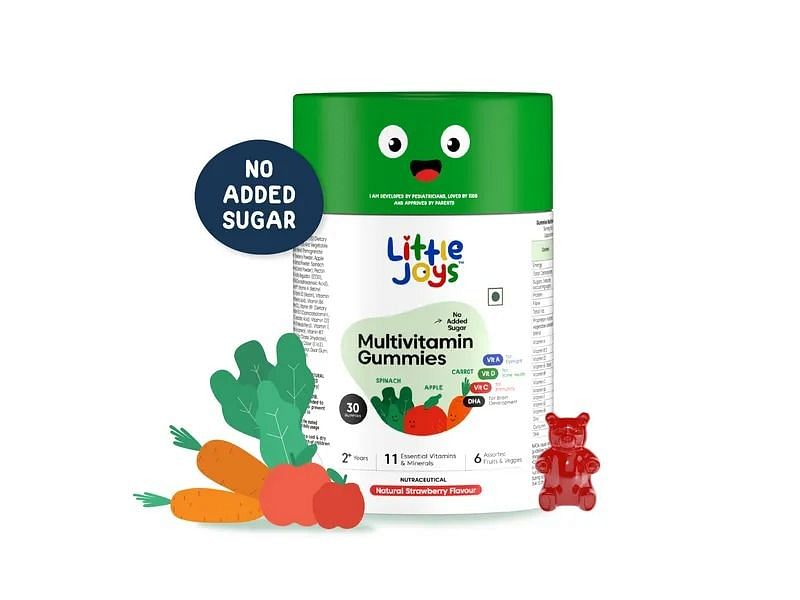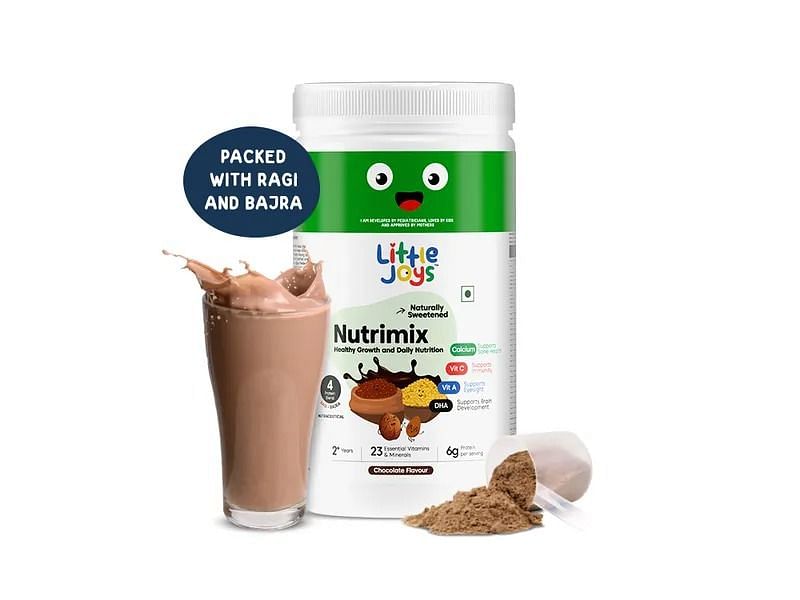15 Doctor Backed Strategies To Deal With Your Extreme Picky Eaters
Nutrition from different sources is essential for the growth of kids. Click for 15 doctors recommended strategies to introduce new food to a picky eater.

Are you struggling with your children's eating choices? Are they giving you a hard time during meals? Then this article is exactly what you need right now! Kids below 5 years of age need proper nutrition for a healthy mind and body growth. However, introducing variety in their food can be tricky in some cases.
15 Proven Strategies for Picky Eaters
Most preschoolers are fussy eaters and prefer to consume only their favourite dessert or vegetable. If your kid is one of them, check out these 15 doctors' recommended tips and tricks to help you deal with the issue.
1. Introduce New Food to Your Child
Try out different food items to see what your child likes. This way, you will be able to expand the affability of their taste buds. However, picky eaters are usually hesitant to taste new food items. So instead of giving them a full plate, make a meal that includes the maximum portion of what your child likes and a small quantity of new food.
You can either put the new food in the corner of their plate or keep the bowl of new food near them. Also, create a nutrition plan that includes three full-course meals and two to three snack breaks. This will give your child some time to feel hungry before the meal. They will be more open to the idea of trying out new food when their stomachs are empty.

ProteinMix Powder
Are you looking for a way to support your kids' growth and development? Little Joys has got you covered with our ProteinMix Powder - the ultimate ragi & bajra blend designed to promote healthy growth and brain function!
🌾 2x more protein
🛡️ Boosts immunity with superfoods like ragi and bajra
💪🏼 Weight gain with the goodness of almonds and walnuts
⬆️ Height growth with plant-based protein sources like moong dal, peas and brown rice proteins
🌴 Naturally sweetened with jaggery and dates
🚫 No white sugar
2. Implement the Rotational Rule
Avoid serving the same food item more than once a day or consequently for two days, especially if your child showed no interest the first time. If you keep serving them repeatedly, you may come across as pushy. As a result, your child would resist eating them even harder.
Instead, give picky eaters one new food item every day in a week and repeat those in the next week. This way, your kid will gradually get familiar with food without feeling cornered.
3. Include Your Child in the Food Selection Process
Fussy eaters are more interested in trying new food when they are involved in the process of selecting, growing, or making it. Take them with you for grocery shopping and introduce them to new vegetables and fruits. Fresh and colourful-looking food excites them and increases their curiosity.
You can also include kids in the food-making process. Depending upon the age and interest, you can ask them to tear lettuce, wash vegetables, or whisk the batter. Encouraging them to set the table, decorate salad plates or add toppings to dishes would also be a good idea. Ensure they have fun in the process, which further increases their interest in tasting new food items.
4. Make Gradual Changes
If your child likes one type of food, try mixing the new food with it but add only a small amount at the start. For example, you can mix 95% of the white mashed potatoes with 5% of the sweet potatoes. Kids won't be able to spot the difference because the quantity would be so small. Now slowly increase the percentage of sweet potatoes. Eventually, they will get used to the taste and colour of new food.
If you are serving a new food in smoothie form, make it as liquid as possible. Then make it chunkier and chunkier with each passing day. This is because liquid food is easier to consume than solid food.

Immunity Boosting Kit
Looking for an effective way to boost your child's immunity? Introducing the Little Joys Immunity Boosting Kit - the perfect solution to keep your little ones healthy and strong!
Our kit contains powerful ingredients like ragi ✅ bajra ✅ Vitamin C ✅ haldi ✅ all carefully chosen for their immune-boosting properties. 🛡️ Our Nutrimix Nutrition Powder and Multivitamin Gummies work together to provide your child with a balanced mix of essential nutrients that support their growth and development. 💪🏼. Order now and rest easy knowing that your child is getting only the best quality ingredients to support their immunity and overall well-being! 🌸
5. Make Meals Enjoyable for Your Child
Kids love colours, and unique shapes increase their curiosity. You can try decorating dishes, experimenting with plating, and including more colours to make meals fun for picky eaters. You may incorporate some ideas to make rainbows from vegetables, put cereals and raisins on peanut butter to create ants on a log, and cut sandwiches in fun shapes.
Beautiful cutleries such as colourful plates, cute-shaped mugs, and animated silverware also attract kids' attention toward new food. This option may seem a little more tedious than others because it involves some additional effort in preparing meals. However, all the effort will be worth it if, eventually, your kid starts eating more variety of food.
6. Include a Dessert With the Meal
Serving dessert and other food items gives kids the freedom to choose what they want. On the contrary, if you serve them after a meal, children will consider them rare and won't pay much attention to other food items.
Notions like "desserts after dinner" or "special treats to those who will finish veggies" make fussy eaters believe that certain food items are superior to the other. Thus, you should always serve sweets with other food so that the child sees them as equals.
7. Keep the Size of the Portion Small
A large portion of an unfamiliar food item might overwhelm your kids, and they may not even touch it. Hence serve only a small portion in the beginning. If they like the taste, then ask if they want more. Increase the quantity gradually depending upon the appetite of your children. Serving small portions also prevents the wastage of food.
8. Organise Picnics or Meal Dates With Your Child's Friends
Children are more excited to eat something new when their friends are eating it too. So invite their other friends for a meal or organise a picnic with them. Serve fruits and vegetables that your child was otherwise hesitant to taste. One meal won't change a fussy eater's habit, but at least they will taste it once. Further progress depends upon how good or bad they thought the taste was.

Multivitamin Gummies
Introducing our Litlle Joys Multivitamin Gummies, the perfect solution to ensure your child gets the essential nutrients for their growth and development. Our unique formulation is specifically designed to meet the Recommended Dietary Allowances (RDA) for kids aged 2-6 years.
🍊 24+ vitamins for your little one's daily nutritional intake
🛡️ Boosts immunity with Vitamin C, Haldi and Vitamin B12
😷 Reduces infections with the power of Zinc
💪🏼 Supports antibody production and strengthens the immune system with Vitamin B9 and Vitamin D
🚫 Contains no added sugar
9. Exclude Distractions From the Dining Table
Kids will pay attention to what they are eating when they are not distracted by other things. So set a proper timing for meals when the whole family sits together to eat. Turn off the TV and keep mobile phones, toys, or other playthings away. Instead, encourage conversations about how food tastes.
Talk about how the new food item tastes, but don't oversell it. Observe their reaction and then encourage them to try it. Having conversations about food also increases children’s curiosity and gives you an idea about their preferences.
10. Allow Your Children to Play With Food
Familiarising picky eaters with a new food doesn't necessarily mean putting in effort to make them eat it. Your aim should be to introduce a fruit or vegetable to their mind in any form possible. It could be by tasting, touching, or looking at it.
When kids spend time with food (whether through cooking, baking, gardening, or playing games), they become familiar with it. Children will choose these over fruits/vegetables they have not seen. If picky eaters know that a portion of food exists, they would be willing to eat it when served on the plate.
11. Keep Trying New Tricks and Techniques
Kids might be hesitant to try out a new food the first time they see it. So don't be disappointed if the first attempt turns out to be a failure. Keep trying at frequent intervals. When your child sees food regularly on the table, they will eventually be curious enough to taste it.
Generally, it takes more than 15 exposures to a portion of food to get a child interested enough to try it. Exposure may include eating food in front of kids, keeping it on the table, encouraging them to touch it, and more such activities. If they taste a food item and don't like it, try serving it in some other form. E.g., they might hate spinach soup but love its salad.
12. Approach With Patience
A study on the prevalence and correlates of picky eating in preschool-aged children was published in 2016. According to this research, 25% of kids between 1.5 to 5 years of age are picky eaters. It corroborates that this habit is quite common among growing children. Hence, you shouldn't worry if your kid is one of them and try to implement all the techniques with patience.
Picky eating is also a result of a sensory disorder that reduces the food tolerance level of children. So if they continue to be a picky eater despite repeated efforts, consult a paediatrician.

NutriMix Nutrition Powder
Introducing Little Joys NutriMix Nutrition Powder - the ultimate ragi & bajra blend for your little ones! Our unique formula has been crafted to provide a comprehensive solution to support the immunity and development of your child.
💪🏼 Weight gain with the goodness of almonds and walnuts
⬆️ Height growth with plant-based protein sources like moong dal, peas and brown rice proteins
🛡️ Boosts immunity with superfoods like ragi and bajra
🌴 Naturally sweetened with jaggery and dates
🚫 No white sugar
13. Discuss Ingredients With Your Child
Avoid being secretive about the ingredients of the food you prepare for children. If they ask what you added to their dish or smoothie, be upfront about it.
A "Hush-hush" attitude makes them believe that the ingredient you are hiding isn't supposed to be in their food. If they say no to eating after knowing about the ingredients, talk about how delicious it tastes or show them what it looks like.
14. Use Creative Ways to Increase Curiosity
Adding condiments to new foods makes them look more delicious in children’s eyes. You can serve tomato sauce, mayonnaise, or dipping sauce with sweet potato fries. Similarly, you can mix pieces of broccoli or green peppers with spaghetti sauce, and fruit salads can be served with top cereals.
These combos make food enticing and fun for kids. If they suggest some new combo, don't hesitate to try it. The purpose is to increase variety in your child's diet, and if that involves experimenting with new combinations, then you should be open to testing them.
15. Avoid Putting Extra Pressure on Your Child
Forcing children to eat a particular food or punishing them does more harm than good. They will start considering eating as a duty and try to come up with all possible excuses to avoid it. Instead, encourage them via other tricks mentioned in this list. Kids accept a food item only when they feel it was chosen by them and not forced by someone else.
Keep in mind that changes do not happen overnight. A fussy eater won't start eating broccoli or spinach the first time you introduce them. So be patient and try to have fun with the whole process. Ultimately, the only thing that matters is their physical and mental well-being.


